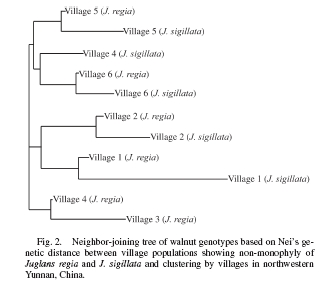It’s obvious really. If you have a problem in a billion-dollar industry — almonds — because your workforce — bees — are dying like flies, what do you do? Forget the bees. Breed almonds that don’t need pollinators!
Which is exactly what breeders at the USDA are doing. Actually, self-pollinating almonds are apparently nothing new. There’s a Spanish variety, Tuono, 1 that “has been around for centuries”. But it doesn’t suit the almond industry of California. Even before Colony Collapse Disorder became a problem the USDA geneticists were busy using Tuono as the pollen parent in a series of crosses, because in addition to dispensing with bees it has other good properties. And now eight new, self-pollinating varieties have been evaluated. In time, they may replace the standard, bee-demanding variety Nonpareil, which apparently accounts for 37% of California’s almond trees. 2
Oh, and if you’re really into almonds, you probably already know about The Almond Doctor.
